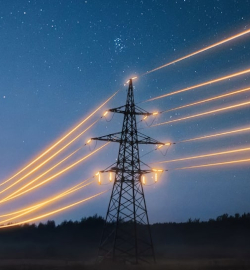Cost-free and risk-free
By taking part in DSR events with Enel X, organisations face no upfront costs or risks. If organisations can’t temporarily reduce their consumption, there are no penalties; they’re simply not paid for that event.
Contributing to grid stability
All electricity users in Ireland and Northern Ireland benefit from participation in Demand Side Response, as it is crucial for managing the continued security and supply of energy. By taking part, organisations are helping to stop power outages while generating revenue.
Sustainability and decarbonisation
By helping to balance energy supply and demand, participants make room for more variable renewable energy (VRE) sources, such as wind and solar, to be introduced onto the grid. This helps to decarbonise the economy and meet Net Zero emission targets too.
Improved business resilience
Often used and maintained assets are more reliable. Organisations that use battery and generation assets in DSR events are more likely to be able to use these assets in cases of unpredicted outages.
Protect operations with advance notice of outages
If grid instability and outages are predicted, Demand Side Response participants receive advance warning, giving them the opportunity to prepare. This can give companies like manufacturers the opportunity to schedule downtime and maintenance to coincide with outages.
Overall, Demand Side Response can help organisations to support a flexible grid, increase profitability, reduce emissions, and enhance operational resilience. Read this white paper to find out more.



